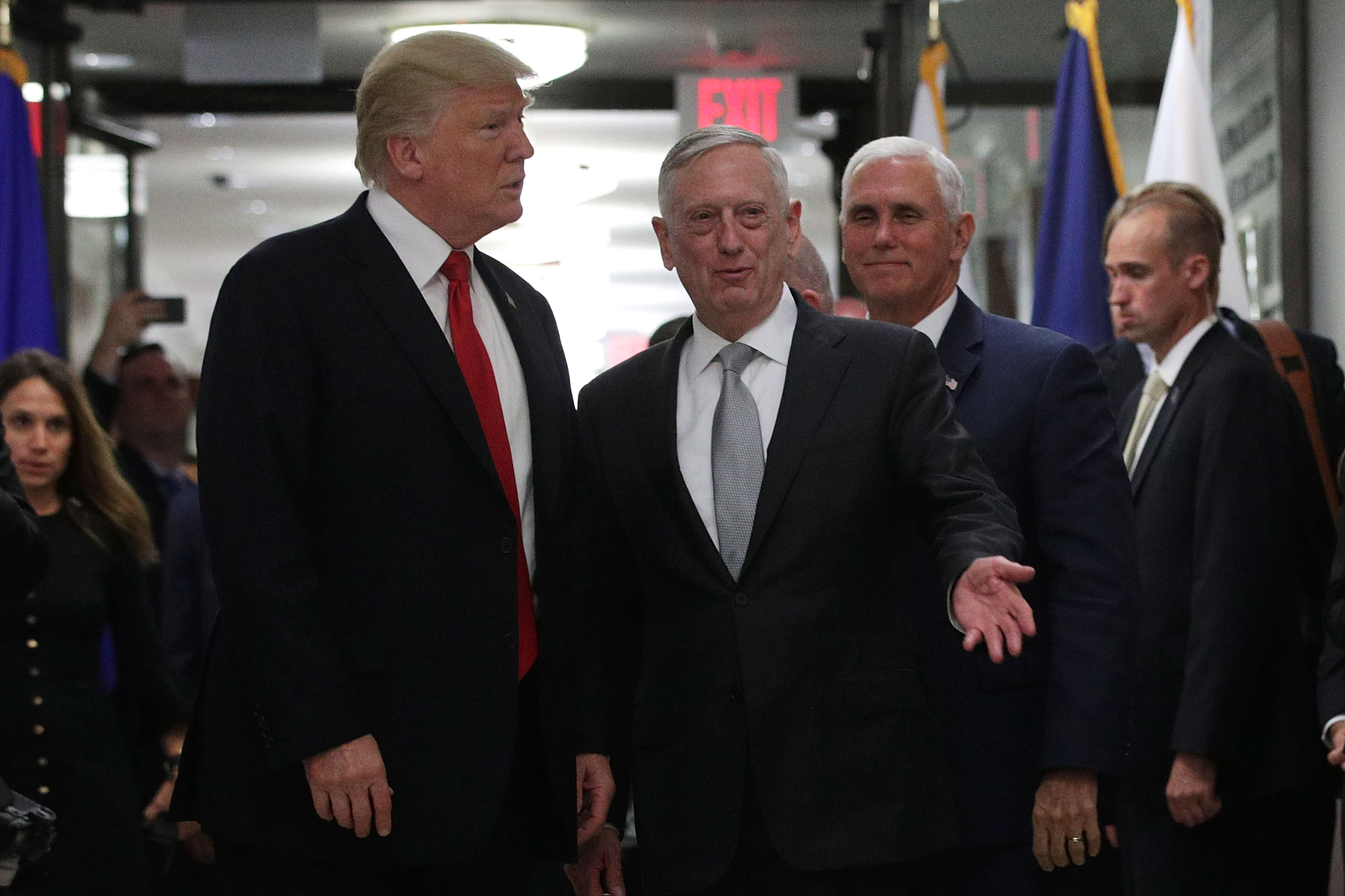Trump is expected to increase U.S. troop levels in Afghanistan in war strategy speech


In a nationally televised address on Monday night, President Trump will lay out his new strategy for the war in Afghanistan, and the strategy is expected to include sending "several thousand" more U.S. troops to aid in the 16-year war, The New York Times reports. Trump announced that he had completed his strategic review on Saturday morning, and on Sunday night, Defense Secretary James Mattis told reporters that Trump has "made a decision," adding, "I am very comfortable that the strategic process was sufficiently rigorous and did not go in with a preset position."
There are currently about 8,400 U.S. troops in Afghanistan as part of the 13,000-strong NATO force that's training and advising the Afghan military, plus another 2,000 or so U.S. troops conducting counterterrorism operations against Taliban, al Qaeda, and Islamic State militants. Trump gave Mattis the authority in June to deploy up to 3,900 more troops to Afghanistan, but Mattis has declined to do so without a broader strategy in place.
The president has been working on his Afghanistan strategy for months, as former President Barack Obama did when he took office. Trump was inconsistent during the campaign on what he thought the U.S. should do about Afghanistan, and he has considered pulling out as president, because, as he noted in 2013, the war is very expensive.
The Week
Escape your echo chamber. Get the facts behind the news, plus analysis from multiple perspectives.

Sign up for The Week's Free Newsletters
From our morning news briefing to a weekly Good News Newsletter, get the best of The Week delivered directly to your inbox.
From our morning news briefing to a weekly Good News Newsletter, get the best of The Week delivered directly to your inbox.
But Trump has told advisers he's been shown maps of Afghanistan from 2014 and 2017, and the Taliban's presence in the country (indicated in red) had grown from a little bit to more than half the map today, reports Jonathan Swan at Axios, adding: "Trump has been reluctantly open to the generals' opinion and I'm told he doesn't want to be the president who loses the country to the terrorists." At the same time, GOP strategist Ron Bonjean tells The Washington Post, Trump's "address is designed to turn the page from the Charlottesville chaos and remind voters that Trump is commander in chief and has made an informed and responsible decision." The speech, from Fort Meyers in Virginia, will be at 9 p.m. EST, during a town hall House Speaker Paul Ryan (R-Wis.) will be conducting through CNN.
A free daily email with the biggest news stories of the day – and the best features from TheWeek.com
Peter has worked as a news and culture writer and editor at The Week since the site's launch in 2008. He covers politics, world affairs, religion and cultural currents. His journalism career began as a copy editor at a financial newswire and has included editorial positions at The New York Times Magazine, Facts on File, and Oregon State University.
-
 Political cartoons for December 21
Political cartoons for December 21Cartoons Sunday’s political cartoons include Christmas movies, AI sermons, and more
-
 A luxury walking tour in Western Australia
A luxury walking tour in Western AustraliaThe Week Recommends Walk through an ‘ancient forest’ and listen to the ‘gentle hushing’ of the upper canopy
-
 What Nick Fuentes and the Groypers want
What Nick Fuentes and the Groypers wantThe Explainer White supremacism has a new face in the US: a clean-cut 27-year-old with a vast social media following
-
 Operation Rubific: the government's secret Afghan relocation scheme
Operation Rubific: the government's secret Afghan relocation schemeThe Explainer Massive data leak a 'national embarrassment' that has ended up costing taxpayer billions
-
 British warship repels 'largest Houthi attack to date' in the Red Sea
British warship repels 'largest Houthi attack to date' in the Red SeaSpeed read Western allies warn of military response to Iranian-backed Yemeni rebels if attacks on ships continue
-
 Houthi rebels claim Red Sea ship attacks
Houthi rebels claim Red Sea ship attacksspeed read Iran-backed Yemeni group vows to escalate aggression towards Israel-linked vessels in revenge for Gaza war
-
 Israel plans next phase of Gaza war as first hostages released
Israel plans next phase of Gaza war as first hostages releasedSpeed read After four-day ceasefire 'we will not stop' until destruction of Hamas, says Israel
-
 Mob storms Russian airport 'looking for Jews'
Mob storms Russian airport 'looking for Jews'Speed Read Plane from Israel surrounded by rioters chanting antisemitic slogans after landing in Russia's Dagestan region
-
 Tuberville's military promotions block is upending lives, combat readiness, 3 military branch chiefs say
Tuberville's military promotions block is upending lives, combat readiness, 3 military branch chiefs saySpeed Read
-
 Ukraine's counteroffensive is making incremental gains. Does it matter in the broader war?
Ukraine's counteroffensive is making incremental gains. Does it matter in the broader war?Speed Read
-
 US commissions first-ever Navy ship in a foreign port
US commissions first-ever Navy ship in a foreign portSpeed Read
